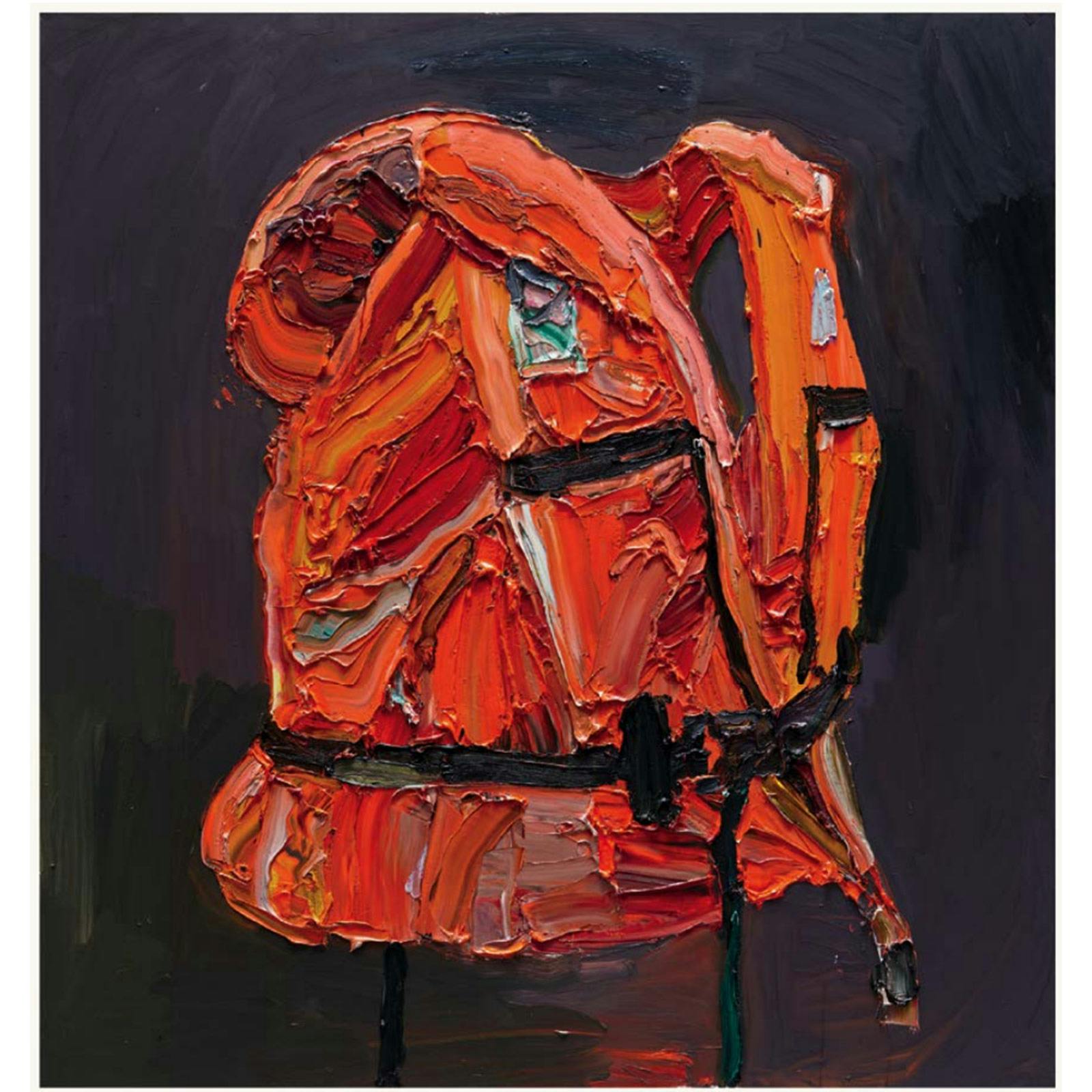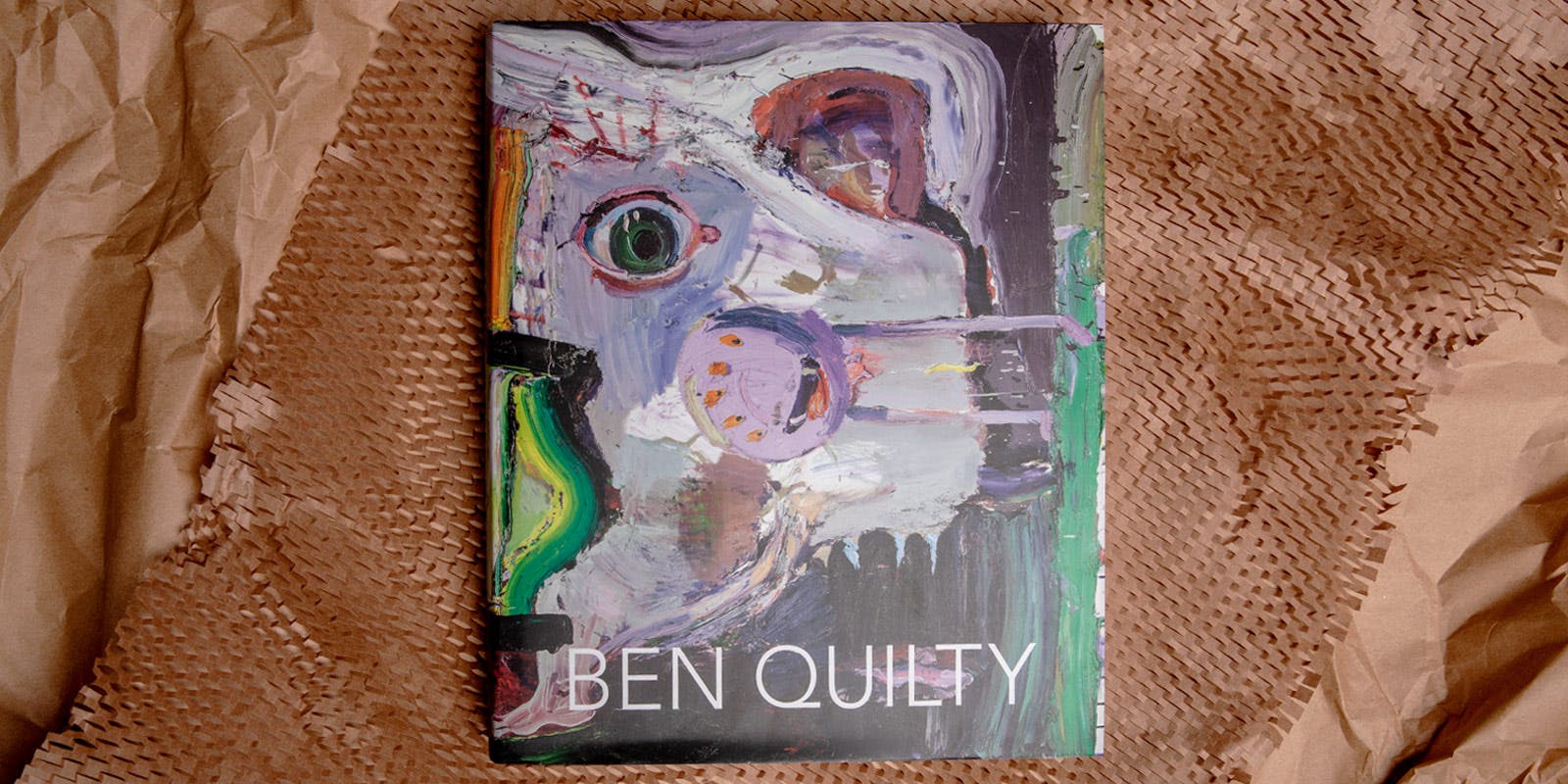Richard Flanagan discovers the ‘fury of meaning’ within Ben Quilty’s 2016 painting, ‘High tide mark’.
In this series of extracts and articles we highlight the works of incredible artists. For this week’s edition we borrow words from Richard Flanagan’s foreword to the 2019 retrospective of his artist friend, Ben Quilty.
We have entered an age in which, for the first time since the 1930s, all art is political – or, at least, that is the wisdom of the moment. Ben Quilty’s art occupies a strange place in such a world: at once riding its currents, but also strangely separate from them. He may be saved from being a woke artist by art, and from the increasingly hermetic world of art by his various passions for the world. Because his work never neatly reduces to causes in the way he may even wish. He is too good an artist to allow the woke-man, the activist, the campaigner to determine what it is that he paints.
The great paradox of his work is that though it often involves activist stances, it manages to escape the limitations of politics. His painting, ‘High tide mark’ (2016), exemplifies the compelling dualism of his work. The subject is a life jacket found on the shore of Lesbos, abandoned by a refugee who has made the dreadful journey from Turkey to Europe across the fatal Aegean Sea. I remember clearly when he and I clambered down a steep bank on that island to where thousands of identical orange life jackets rimmed the stony coast bright orange. Lifting one, it felt strange.
With a sharp rock I began tearing it apart to discover a soggy foam of the type used in packaging. The life jacket was a fake. In the way of our times it was an alternative fact, a death jacket.
That evening we met a young Syrian woman whose three-year-old son had drowned the night before when their boat sank attempting the crossing.
All Quilty’s gifts are here fully to the fore. His cunning in composition has the life jacket floating in space like a balloon, two ties falling to the bottom of the canvas suggesting it is tethered to some greater unseen reality below. Absent from the picture – as they are absent from the reportage of their crisis, as they are absent from our society – is the refugee who wore the life jacket, a subject unable to even be a subject. The great Australian figurative artist whose most celebrated works are portraits is here working without a human figure to tell the most human of stories.
The paint is applied with an almost Auerbachian fervour that somehow remains under just enough control to give the sense of a painting more sculpted than painted: thick, wild, angry forms of tangerine, yellow and black set against an aubergine background evocative of smoke, desolation, destruction. In the limited palette of this picture his talent as a colourist is on full display, the restraint balancing a fury of meaning. The rush of emotion captured in the rush of paint that appears to have been dragged down and across the canvas in search of a human form that is not there; a vivacity and energy of image that suggests the same in the making; an accuracy of line and form subjugated to a greater purpose, the wild, almost angry marking suggesting some fundamental error or flaw in the world of concrete things. If the subject is tortured and torturous, the execution is lithe and alive, animated by a great and still powerfully present energy.
It is a strange thing to realise that a still life of a life jacket can reduce you to tears. But such was my experience looking at this terrible painting of our times.

Hide tide mark, 2016
Oil on linen
170 x 160 cm
Collection of the National Gallery of Victoria, Melbourne
The John McCaughey Memorial Prize Trust, 2016



.jpg?w=690&h=344)









